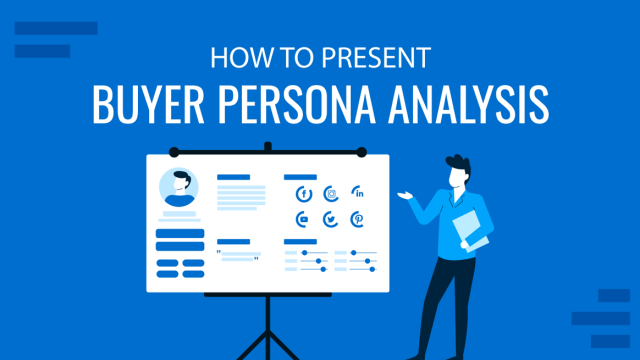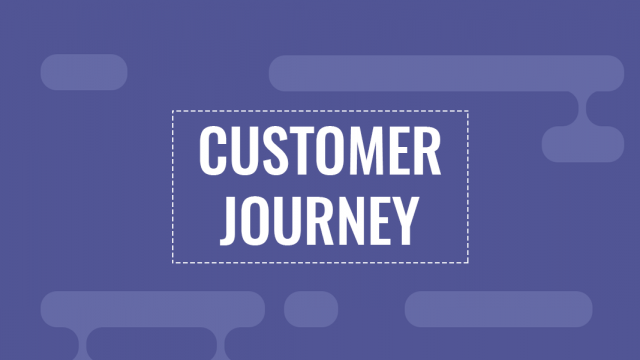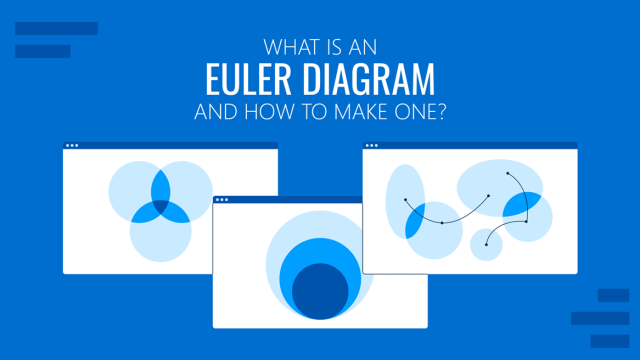
Personalization. Every marketer today understands that personalized messages hit the mark way more frequently than generic pitches. In fact, every dollar invested in advanced personalization generates twenty dollars in return.
Hidden with this word personalization is the word persona – the key tool for developing those irresistibly attractive marketing campaigns. So let’s dig into the matter!
What is a Buyer Persona in Marketing?
HubSpot provides a succinct definition:
A buyer persona is a semi-fictional representation of your ideal customer based on market research and real data about your existing customers.
In short, it is a quick portrait of whom you are trying to sell something. Having several buyer persona templates in front of you helps you:
- Make better product development decisions
- Refine your communications and core sales pitches
- Improve your targeting, personalization and ultimately conversions.
Is Buyer Persona Different from User Persona and Marketing Persona?
In essence, no. All of these three terms are often used interchangeably by specialists from different divisions. UX and product designers prefer the term “user persona” since it better communicates the fact that they are dealing with digital product and services users’.
Marketers, in turn, have their “marketing personas” – proxies for all the different groups of people they are targeting within their campaigns. The only ever-so-slight difference between a user/buyer persona and marketing persona is that the former tend to be created based on existing customer data, gathered from interviews and surveys with existing customers and so on. Whereas marketing personas sometimes can be based on your assumptions about a certain customer group who you are just planning to attract. Though, there are plenty of data-driven marketing personas too.
How to Create a Buyer Persona: 5 Key Data Collection Steps
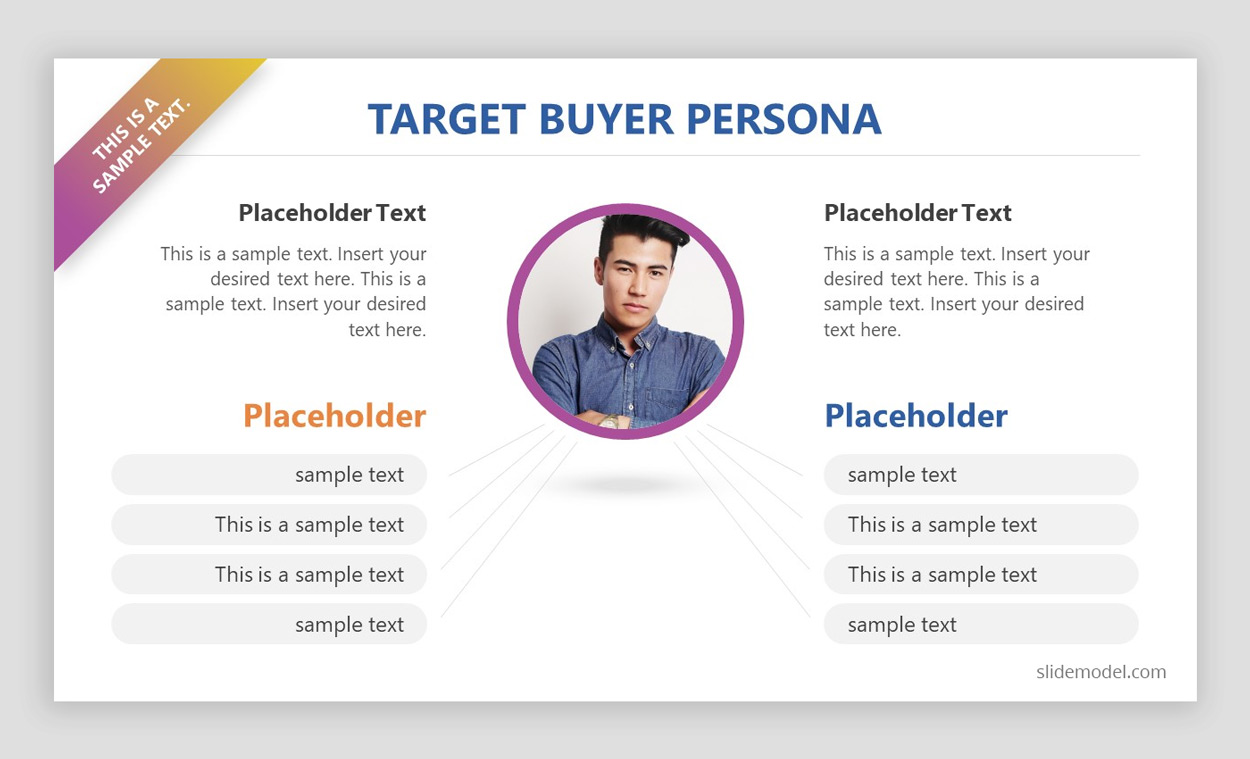
1. Line Up General Demographic Information
At the very minimum, your buyer personas should include the following demographics data:
- Age
- Gender
- Marital Status/Family
- Education
- Location
- Career/Job Title
- Household income (optional).
You should also give your persona a descriptive name – e.g. Nick, The New Buyer – and add a picture (if you like).
For example, for our company, one of the ideal customer personas would be someone like Sam, The Sales Manager.
- Age: 30-40
- Gender: Male
- Marital Status: Married
- Education: BA/BS
- Career Type: Sales // Mid-Level
- Income range: $60,000-$85,000 per year.
- Location: Urban
- Time spent online per day: 4-7 hours
Note: “My job involves doing a lot of client presentations and product demos. I’m often short on time and need a quick way to assemble an attractive PowerPoint presentation. Also, I’m sometimes asked to conduct training for Junior Sales Managers, so I also need to create presentations for that”.
2. Add Interests and Common Behaviors
Now let’s pull in some extra padding for your persona – their interests and purchase behaviors. To hone your pitches, you should understand how your target buyers get their information fix and where they look for recommendations.
In your persona template, specify:
- Which social media platforms they use most often?
- What publishers do they read?
- What’s their most preferable content type – video, podcasts, blogs, case studies, etc?
- Where else do they get information (e.g. from online communities)?
- Which advertising mediums they trust/distrust most?
NB: While you do your research and analysis, don’t forget that most of our day-to-day decision-making is driven by irrational factors and bias – something that behavioral economics attempts to unravel. Thus, do not assume that every customer will act most rationally or pursue the straightest path to purchase.
3. Key Pain Points and Aspirations
No consumer profile will be full without insights on the customers’ biggest frustration and grandest aspirations.
Harry’s – a direct to consumer startup that acquired 2 million customers in 2 years and was recently purchased for $1.37 billion – is a prime example of how deep understanding of the customers’ pain points can fuel major growth. The company’s founder, Andy Katz-Mayfield, was deeply frustrated with his in-store razor buying experience.
- The choice of razors on display was overwhelming. Also, to look at any product you needed to wait for an employee to come and open the locked case.
- Most razor brands didn’t list much information and product specifications on the box, making the choice even harder.
- Lastly, he had to pay $25 for his “shaving kit” of 4 blades and some shaving cream.
Frustrated with his subpar experience, Andy teamed up with Jeff Raider, co-founder of another DTC startup Warby Parker, and launched a simple online razor company that offered:
- One great razor
- A set of cheap, but good blades
- Door-to-door delivery.
This no-frills, but pretty well-targeted offer, sold out 10,000 handles in a few days during launch. In short, their recipe for success was – a simple unique offer that solves a common pain point (buying razors) and meets the customer aspiration (get good leathers at a fair price).
Speaking of aspirations, these are also an important nugget you should pay attention to in your go-to-market strategy. A certain problem may not be as big or as “painful” as you anticipate. Thus, not many people are proactively looking for ways to solve it (and ready to pay cash for some solution). For instance, there are hundred-thousands of lefties on the planet and it also rains a lot in most climates. But do they need a special left-handed umbrella? Not really.
4. Values and Fears
Similarly, to better understand how to speak to your target audience, you should understand what they value and what their fear. These can be the “bigger” things such as financial security, or they can be smaller things such as finding ways to simplify his life.
Let’s say you are creating a new financial app for Gen Zs – a new generation coming of age and earning their first paychecks. You already have plenty of general demographics data about them and also understand why they are frustrated with traditional banking products (e.g. most are “too old-school”, don’t support P2P transfers and so on).
Now combine that with the following facts:
- 31% of Gen Z believe they will not have to rely on banks in the future and instead can get by using FinTech apps or financial products from tech companies (like Google).
- 35% plan to start saving for retirement in their early twenties and 12% are already doing so.
- Also, 23% believe that debt should be avoided at all costs.
Clearly, we can see that this cohort has new values – early savings – and certain unique fears –
becoming debt-burdens. To win some favors, your financial product and associated marketing should clearly prioritize savings over credit cards with huge sign-up bonuses (something that worked well with the Millennials).
5. Best Suited Value Proposition
Last, but not least comes your unique value proposition. It should organically sit on the intersection of your ideal customer’s needs/aspirations, values and fears. Further, it should appeal to them on a personal level based on their demographics data and their values and fears.
To continue the previous example, a unique value proposition a bank could extend to Gen Z customers could be something like this:
“Get your first savings account opened online in 3 minutes. Snap your ID, take a selfie and fill in some other deets to get a free debit card + 1.7 ARR savings account!”
How to Conduct Persona Analysis to Fill Your Template
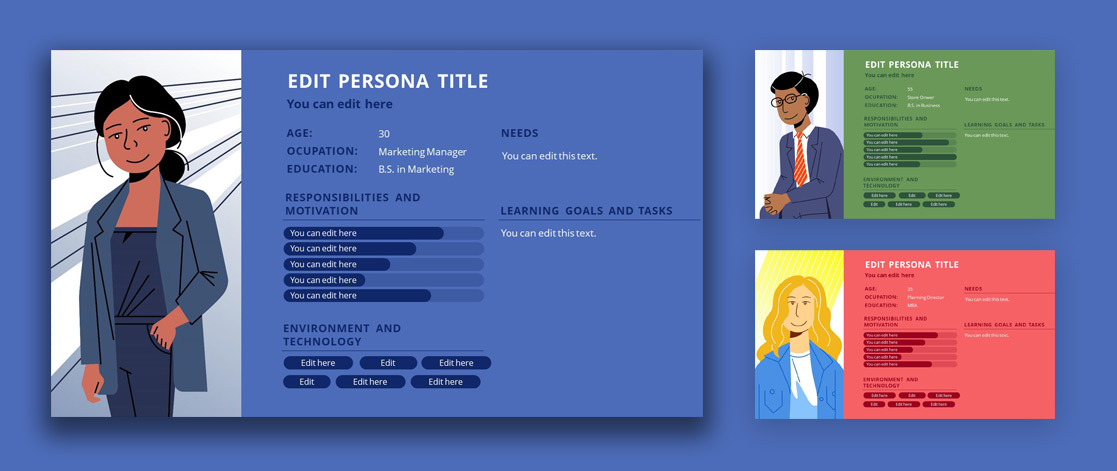
Source: Editable Buyer Persona PowerPoint template by SlideModel
Now that you know the key data points every buyer persona needs, let’s take a look at the best ways for assembling those insights. Actually, you already have lots of sources to tap into! Here are some of them.
1. Start with Basic Customer Research
Your current customers are the best source of information. So dab into all the voice-of-customer data you already have. Or if you are a bit short in that department do the following:
- Dispatch a quick customer survey (with a quick bait/prize for those who will complete it).
- Schedule a few direct customer interviews/calls with your biggest accounts.
- Run a focus group (can be costly).
- Review notes, chat/phone transcripts from your customer support department.
2. Leverage Social Media
Facebook, Twitter, LinkedIn, Quora, Reddit – all host plenty of community discussions around pretty much any topic available. Engage in social listening to understand what is bothering your target audience, what do they think about your brand and your competitors, and what do they struggle to get.
You can also surcharge your capabilities to listen to hundreds of thousands of conversations online with big data analytics and ML. That’s exactly how Crimson Hexagon, identified what shoppers on Twitter think about different auto brands:
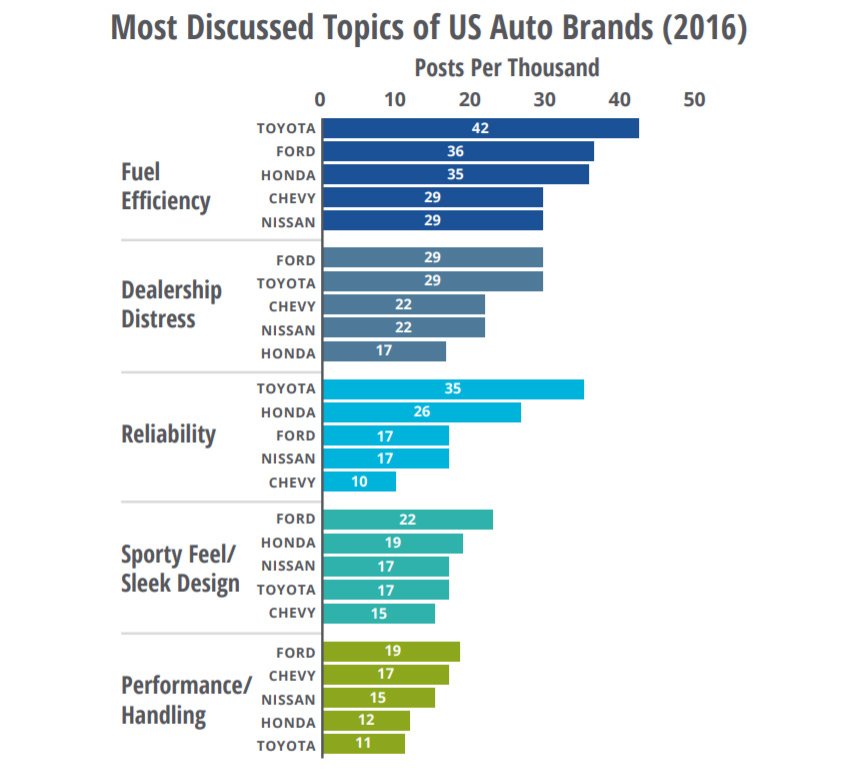
Source: Crimson Hexagon
3. Put Your CRM Data To Action
Go through your records and weed out all the essential demographics bits, along with data that tells about your customers’ typical purchase decisions and buying journeys.
Again, knowing how your most loyal customers “look” and “act” can help you find lookalike prospects in your system and beyond it. For instance, Citizen M hotel chain early identified who their ideal client is – a Millennial solo-travelers with a business-level budget i.e. someone’s in town for a work conference or a business meeting.
To come to that conclusion, they used a mix of CRM data, social media observations, information obtained during each guest interaction and direct feedback. What they are attempting now (and succeeding in) is building their entire brand experience to appeal to “lookalike” prospects who would appreciate everything their hotel chain already offers.
4. Zoom in and Finalize Your Value Proposition
In essence, the entire point of creating a buyer persona is to formalize:
- Who your ideal customer is?
- Where they are right now in their lives and what they are struggling with?
- What is important for them and where they hang out online?
- How does our awesome company help them get to the ideal “to-be state”?
That is what your value proposition should be about. This succinct statement should drive all your marketing messages and guide you in product development. Also, check our persona analysis templates for PowerPoint.
To Conclude
Buyer personas are a strong tool for understanding what you are selling and to whom. Whether you are a new company or an established market player, it’s always worth revisiting your persona characters once in a while and conducting a fresh analysis. Doing so helps you minimize your marketing budget wastes and maximize your conversions and sales!
